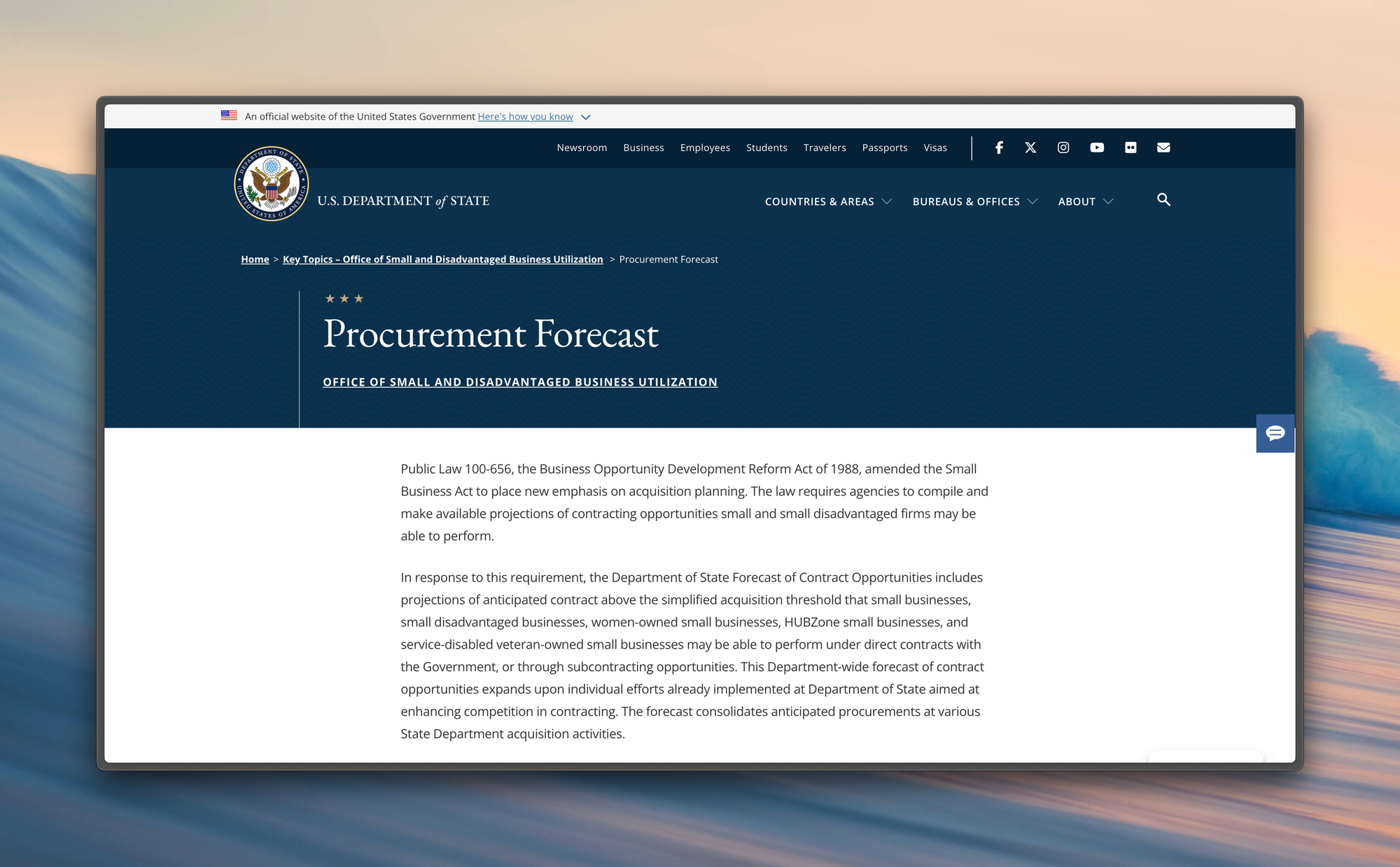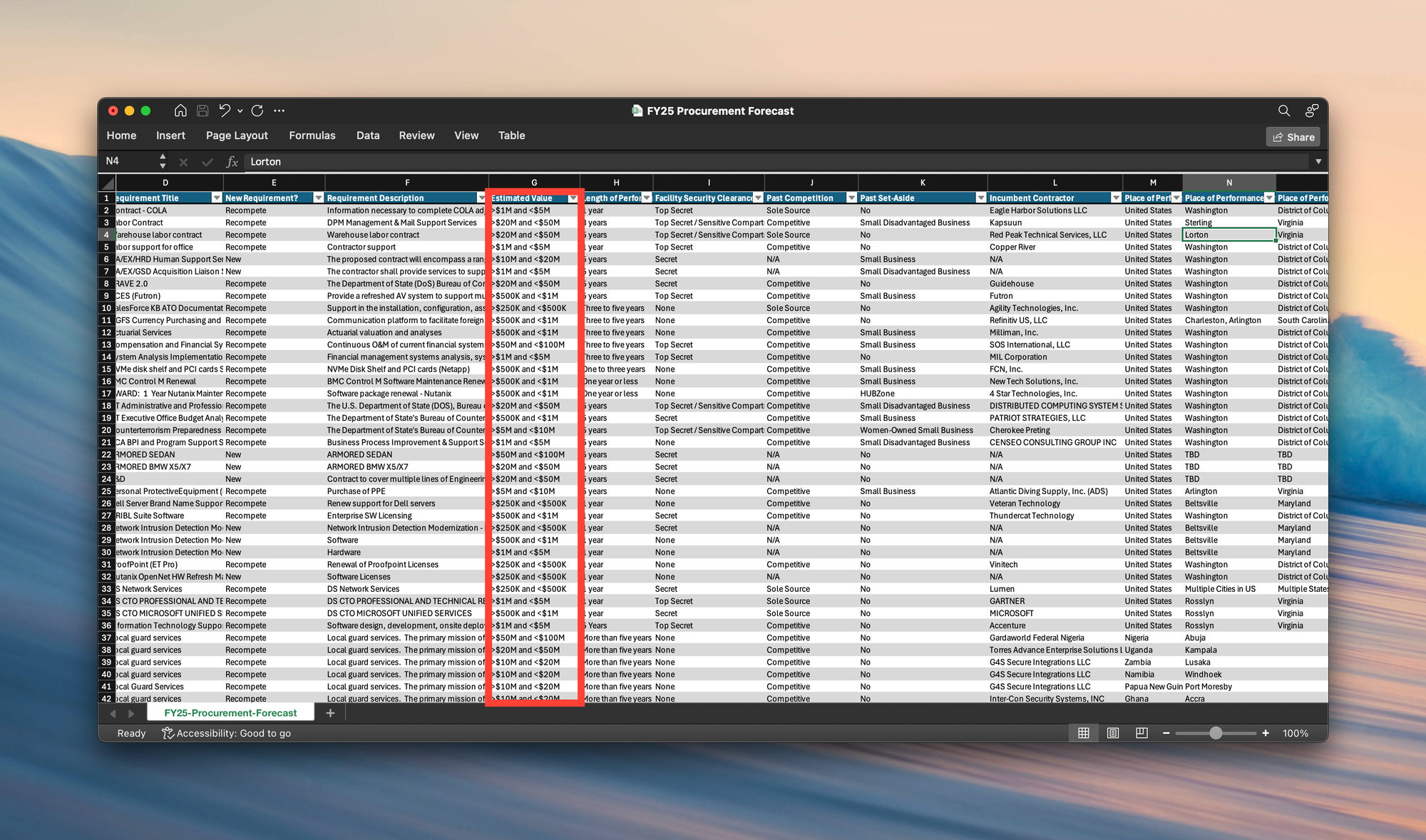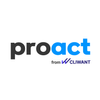Procurement Forecasting: Hard, but Doable

If you’ve been in federal contracting, you’ve probably heard this:
“You can forecast upcoming RFPs. Every agency publishes them.”
And technically, it’s true.
Each federal agency releases its own procurement forecast — a document that outlines expected contracting opportunities, typically published once a year before formal RFPs are issued. Although it only includes large contracts, it provides detailed information, including estimated values.
But here’s the real story from the trenches:
Forecasting Sounds Easy. It’s Not.
Yes, the data exists. But using it? That’s a different beast.
- The formats are inconsistent across agencies.
- Forecasts are buried across dozens of government sites.
- And worst of all — everything is manual.
You’re stuck scanning PDFs, cleaning spreadsheets, checking for rebids, and guessing what’s actually going to turn into a contract.
🧩 For example, here’s the forecast page from the U.S. Department of State:
👉 state.gov/procurement-forecast

Go ahead and take a look. Looks promising, right? Now imagine doing that across dozens of agencies, every week. It adds up fast.
By the time you find something worth pursuing, a competitor’s already shaping the requirements behind the scenes.

Why This Matters: Winners Don’t Wait for RFPs
The smartest contractors don’t sit around waiting for solicitations.
They get in early. They use forecasts to anticipate opportunities. And they start building relationships before the RFP is even written.
In many agencies, the same people who draft the RFP also evaluate it. If you're not part of the early conversation, you’re already behind.
And remember: in the pre-procurement phase, government teams often co-create requirements with the private sector. We've seen this in action — for example, in large airport security projects involving TSA, airlines, and even international stakeholders.
Getting in early isn’t a bonus. It’s a strategy.
Why Good CRM Isn’t Enough
You might think a good CRM will solve this. It won’t — unless you feed it the right data.
- Forecasts don’t naturally plug into your CRM.
- Even if they did, how do you know which forecasts matter?
- Which ones are likely rebids?
That’s where automation becomes critical.
Enter Cliwant: Automated Forecasting That Works
Book a 15-minute call — we’ll show you how to boost your BD and capture efforts with a data-driven approach. (Contact: patrick.han@cliwant.com)

Cliwant connects the dots — automatically.
Our platform aggregates procurement forecasts from across the federal landscape, then structures and analyzes them so your BD and capture teams can focus on what matters: acting early.
With Cliwant, you get:
- Structured data from fragmented agency forecasts
- Rebid detection and contract expiration signals
- Pre-RFP intelligence and alerts
- Seamless CRM integration for real pipeline visibility
We don’t just show you forecasts. We turn them into strategy.

